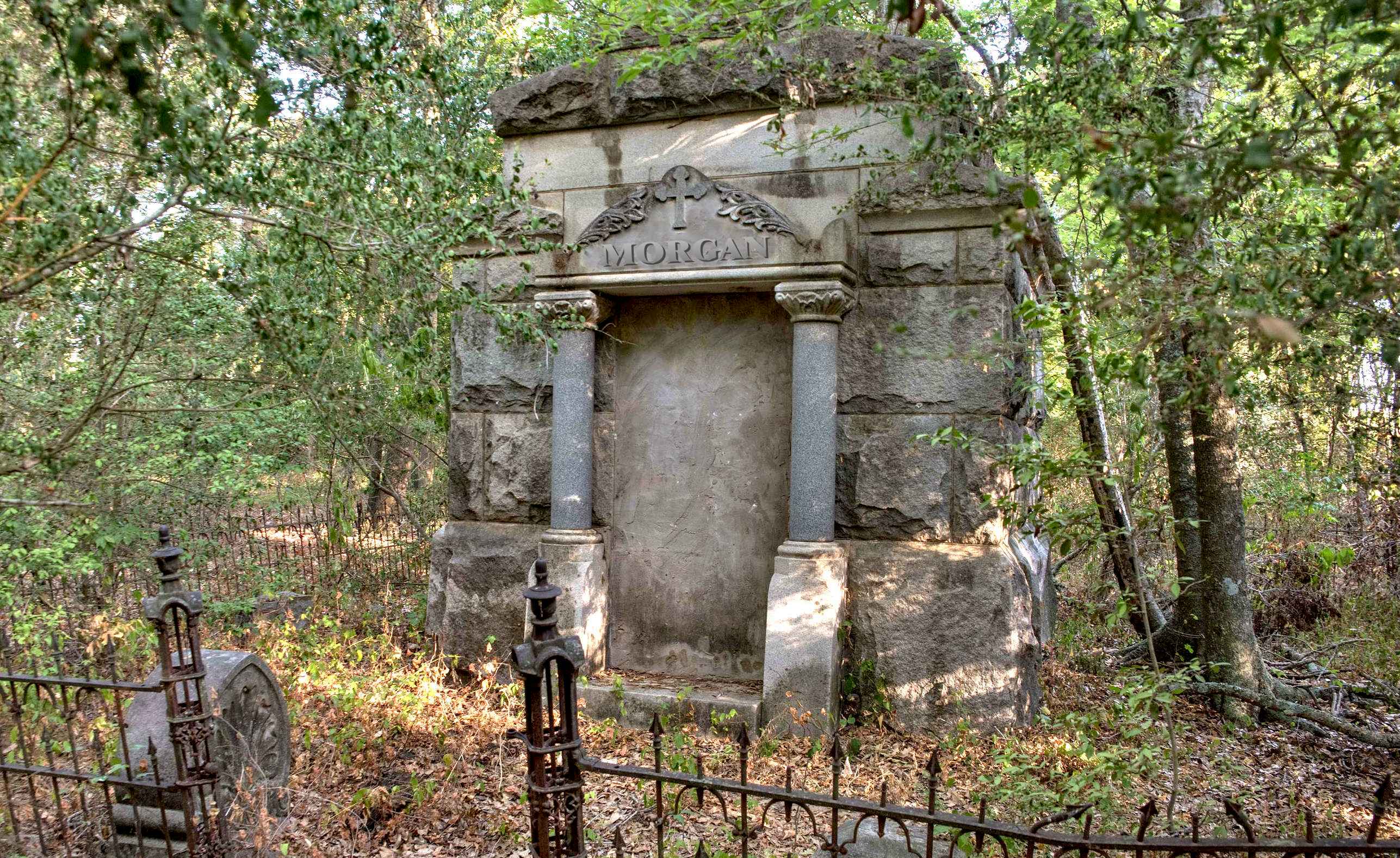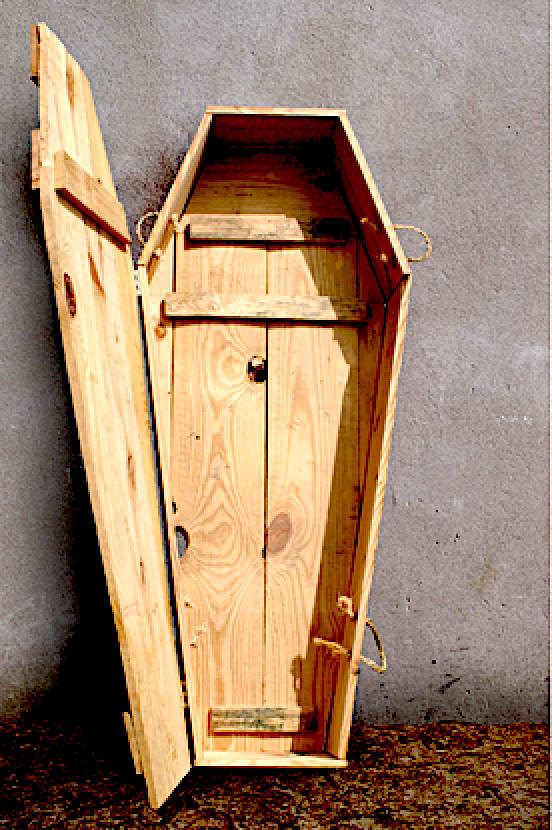
Sir
Henry Morgan was a pirate turned privateer, who raided
Spanish ships in the Caribbean,
giving over 10% of his booty to the English Crown, in
exchange for license to prey on and steal from Spain on the
high seas. Percentages also went to other
parties, before finally being divided up amongst the crew.
You might imagine how the tally would reach staggering
proportions, when you consider just how many ships and
forts, the Welshman captured. But, Morgan's treasure
stash was never recovered. We know he was a cautious man, by
virtue of the escape tunnel from his home in Jamaica, that
also was built on a high vantage point, to be able to detect
invasions. Is this fictional work, the privateer was
interned in a coffin made of Iron Wood, in particular to
preserve the secret of where his un-recovered gold was
stashed, following the raid on
Iron wood, or Lignum vitae (Latin for "wood of life") is an extremely durable
timber product. The plant derives its name from its medicinal uses; lignum vitae resin has been used to treat a variety of medical conditions from coughs to arthritis, and chips of the wood can also be used to brew a tea.
Lignum vitae is very hard and is also the densest wood traded (average dried density: ~79 lb/ft3 or ~1,260 kg/m3); it will easily sink in water. On the Janka scale of hardness, which measures hardness of woods, lignum vitae ranks highest of the trade woods, with a Janka hardness of 4,500 lbf (compared with Olneya at 3,260 lbf, African blackwood at 2,940 lbf, hickory at 1,820 lbf, red oak at 1,290 lbf, yellow pine at 690 lbf, and Balsa at 100 lbf). The densest of all woods is Allocasuarina luehmannii. Krugiodendron typically has a higher density, among many other woods that vary by sample.
Iron wood is extremely hard and abrasive. It will not split. Ironwood will almost grind your cutting tools
(chisels) back while you are trying to cut the wood. The wood pores are almost filled with “sand.” It is a wonderful wood on the lathe, to make ornamental things. It has no real use in the cabinet shop or for veneers. For furniture, it makes nice inlays, but only for small ornamental accent areas. It doesn’t grow very tall, so having ironwood lumber is not a possibility. When trying to cut, you can actually sometimes see sparks from the chainsaw as the bar makes its way through the
wood. It burns like
coal.
USES
Due to the density of the wood, cricket bails, in particular "heavy bails" used in windy conditions, are sometimes made of lignum vitae. It is also sometimes used to make lawn bowls, croquet mallets, and skittles balls. The wood also has seen widespread historical usage in mortars and pestles and for wood carvers' mallets.
It was the traditional wood used for the British police truncheon until recently, due to its density (and strength), combined with the relative softness of wood compared to metal, thereby tending to bruise or stun rather than simply cut the skin.
The belaying pins and deadeyes aboard USS Constitution and many other sailing ships were made from lignum vitae. Due to its density and natural oils, they rarely require replacement, despite the severity of typical marine weathering conditions, and also resisted jamming in their mortise holes. The sheaves of blocks on sailing vessels were made of lignum vitae until the introduction of modern synthetics.
Due to lignum vitae's toughness, it can also be used as a lap in the process of cutting
gems. The wood is covered with powdered industrial diamond, attached to a spindle, and used to smooth rough surfaces of gems.
Master clockmaker John Harrison used lignum vitae in the bearings and gears of his pendulum clocks and his first three marine chronometers (all of which were large clocks rather than watches), since the wood is self-lubricating. The use of lignum vitae eliminates the need for horological lubricating oil; 18th-century horological oil would become viscous and reduce the accuracy of a timepiece under unfavourable conditions (including those that prevail at sea).
For the same reason it was widely used in water-lubricated shaft bearings for ships and hydro-electric power plants, and in the stern-tube bearings of ship propeller
shafts until the 1960s saw the introduction of sealed white metal bearings. According to the San Francisco Maritime National Park Association website, the shaft bearings on the
WWII submarine USS Pampanito (SS-383) were made of this wood. The aft main shaft strut bearings for
USS Nautilus (SSN-571), the world's first nuclear-powered submarine, were composed of this
wood. Also, the bearings in the original 1920s turbines of the Conowingo hydroelectric plant on the lower Susquehanna River were made from lignum vitae. The shaft bearings on the horizontal turbines at the Pointe du Bois generating station in Manitoba are made from lignum vitae. Other hydroelectric plant turbine bearings, many of them still in service, were fabricated with lignum vitae.
The United Railroads of San Francisco (an ancestor of the San Francisco Municipal Railway) began installing insulators made of composite materials to support the heavy
600-volt DC feeder wires for their trolley system in 1904. These lines were damaged, along with most everything else, during the 1906 earthquake and the fires that followed. Rebuilding the trolley system and expanding it to replace cable car routes destroyed in the quake created a huge demand for insulators, a demand manufacturers further east were unable to meet. The properties of lignum vitae, namely its ability to withstand high stress (from heavy cables on long spans and the strain of lines rounding corners) and high temperature (due to the feeder cables becoming very hot during peak operating hours), and its ready availability from the holds of the ships in the harbor (used as dunnage and ballast) made it an ideal 'temporary' solution. Many were still in use well into the 1970s, and the final few were replaced with underground feeder systems in the 2000s.
It was also used extensively in the manufacture of British Railways Mark 1 Rolling Stock, as a "bump stop" in the bogies (the frame that carries the wheels).
ENDANGERED SPECIES
Lignum vitae is also called guayacan or guaiacum, and in parts of Europe known as Pockholz or pokhout, from trees of the genus Guaiacum. The trees are indigenous to the
Caribbean and the northern coast of South America (e.g.: Colombia and Venezuela) and have been an important export crop to Europe since the beginning of the 16th century. The wood was once very important for applications requiring a material with its extraordinary combination of strength, toughness, and density. It is also the national tree of the
Bahamas, and the Jamaican national flower.
The wood is obtained chiefly from Guaiacum officinale and Guaiacum sanctum, both small, slow-growing trees. All species of the genus Guaiacum are now listed in Appendix II of CITES (the Convention on International Trade in Endangered Species of Wild Fauna and Flora) as potentially endangered species. G. sanctum is listed as Near Threatened by the IUCN Red List. Demand for the wood has been reduced by modern materials science, which has led to polymers, alloys and composite materials that can take lignum vitae's place.

Very
basic wooden coffins were used to transport the dead from
battlefields.
WHY ARE WE BURIED IN COFFINS & CASKETS?
The practice dates back from Ancient
Egyptian times when embalmed bodies were preserved in a
sarcophagus that was placed in the
pyramids. As part of some funeral rituals, the ancient Celts also buried the bodies of the dead in coffins made from stone and natural materials.
One of the reasons people started burying the dead was to preserve the body from decay, and also to protect it from wild animals or natural causes such as floods that could wash away the remains. Sturdy coffins were also believed to protect the dead in the
afterlife.
The more robust the casing, the better to survive the ages.
...
REFERENCES
https://www.
